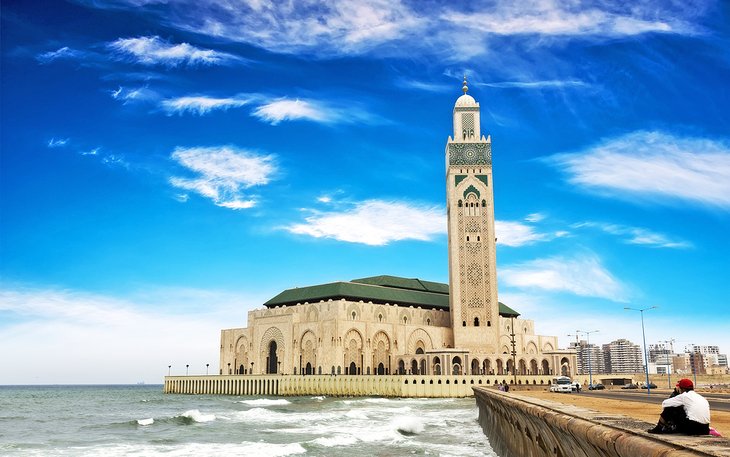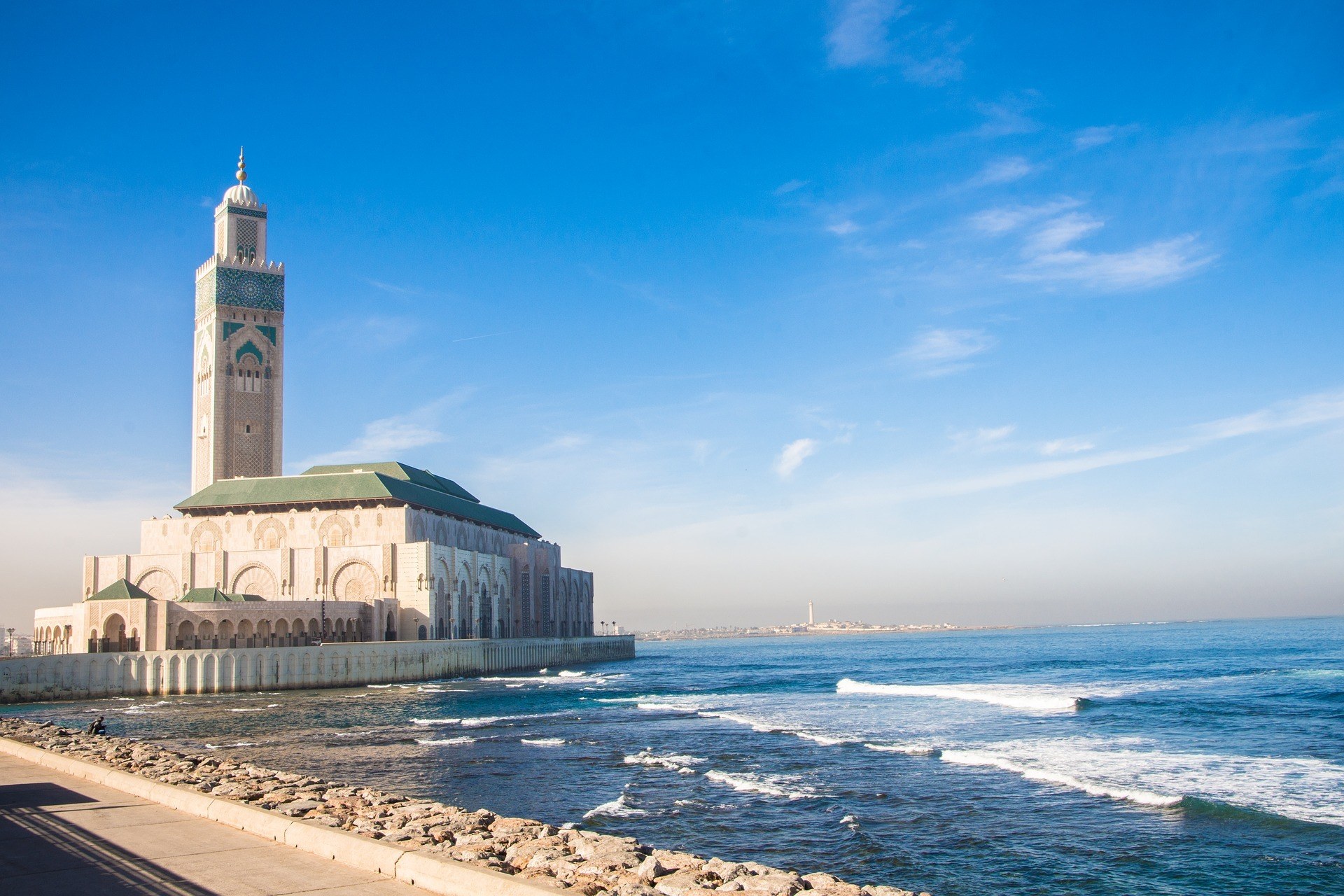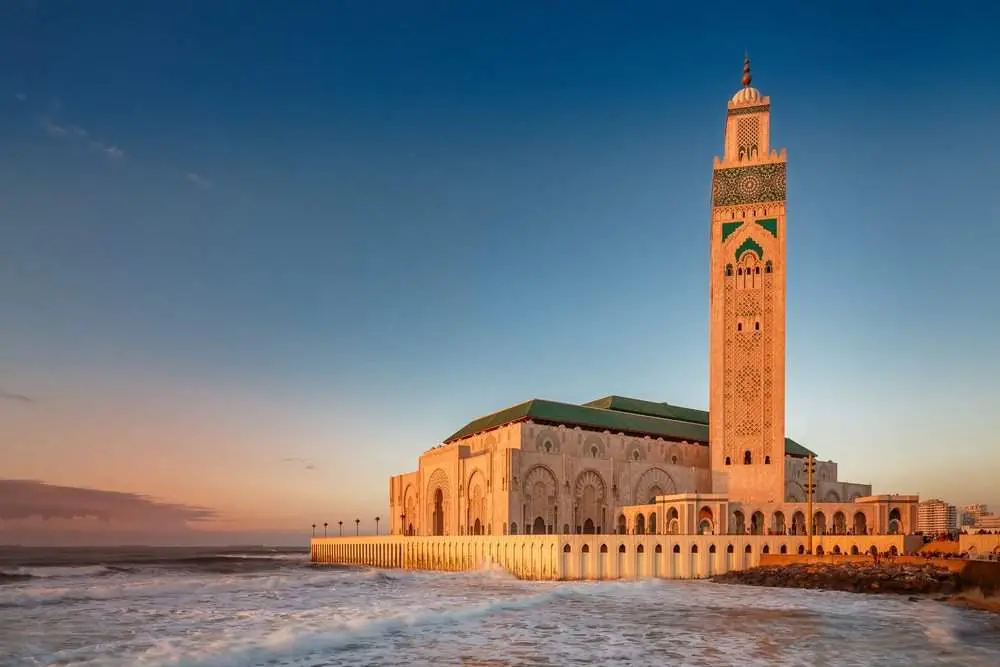
Casablanca, Morocco’s largest city and economic powerhouse, is a captivating blend of tradition and modernity. Often romanticized for its cinematic legacy, Casablanca offers a rich tapestry of experiences that extend far beyond the iconic "Casablanca" film. From its striking Art Deco architecture to its bustling medina and serene coastline, this city promises an unforgettable journey for every traveler.
This guide delves into the must-see attractions, historical context, practical travel tips, accommodation options, transportation, and the best time to visit Casablanca, providing you with a comprehensive overview for planning your adventure.
Top Attractions: A Journey Through Casablanca’s Soul

Related Articles about Casablanca: A City of Contrasts, Charms, and Timeless Allure:
- Tokyo’s Crown Jewels: A Guide to Unforgettable Stays and Experiences in the Metropolis
- Barcelona: A Traveler’s Guide to the City of Gaudí and Sunshine
- Indonesia: An Archipelago of Enchantment – Your Ultimate Guide to an Unforgettable Adventure
- Ukraine: A Journey Through History, Culture, and Breathtaking Beauty
- Emerald Isle Enchantment: A Comprehensive Guide to Ireland’s Top Attractions and Travel Essentials
-
Hassan II Mosque: A true architectural masterpiece, the Hassan II Mosque is arguably Casablanca’s most iconic landmark. Completed in 1993, this colossal structure stands proudly on the Atlantic coastline, with a minaret reaching a staggering 210 meters (689 feet) high – one of the tallest religious structures in the world. The mosque’s intricate details, crafted by over 6,000 artisans, showcase the pinnacle of Moroccan craftsmanship. From the elaborate zellij tilework and cedar wood carvings to the retractable roof that allows sunlight to flood the prayer hall, every element is a testament to artistic brilliance. Non-Muslims can take guided tours to appreciate the mosque’s grandeur and learn about Islamic traditions.
-
The Medina (Old City): Step back in time as you wander through the labyrinthine alleyways of Casablanca’s Medina. Unlike the more tourist-oriented medinas of Marrakech or Fez, Casablanca’s Medina offers a more authentic glimpse into daily Moroccan life. Here, you’ll find local vendors selling everything from spices and textiles to traditional clothing and handicrafts. Get lost in the vibrant atmosphere, practice your bargaining skills, and savor the aromas of street food. While the Medina may not be as aesthetically polished as others, its raw energy and genuine charm make it a worthwhile experience. Don’t miss the Bab Marrakech gate, a beautifully restored entrance to the old city.
-
Place Mohammed V: The heart of Casablanca’s modern city, Place Mohammed V is a grand square that embodies the city’s Art Deco heritage. This elegant plaza is surrounded by impressive colonial-era buildings, including the Wilaya (Prefecture), the Palais de Justice (Law Courts), and the Bank Al-Maghrib. Admire the intricate facades, the stately fountains, and the meticulously manicured gardens. Place Mohammed V is a perfect spot for a leisurely stroll, a photo opportunity, or simply soaking in the city’s sophisticated ambiance.

-
Corniche Ain Diab: Escape the urban bustle and head to the Corniche Ain Diab, Casablanca’s picturesque coastline. This vibrant promenade stretches along the Atlantic Ocean, offering breathtaking views, sandy beaches, and a lively atmosphere. Numerous restaurants, cafes, and nightclubs line the Corniche, making it a popular spot for locals and tourists alike. Enjoy a refreshing swim in the ocean, relax on the beach, savor fresh seafood, or dance the night away. The Corniche is also home to the Morocco Mall, one of the largest shopping malls in Africa, offering a wide range of international brands and entertainment options.
-
Rick’s Cafe: For film buffs, a visit to Rick’s Cafe is a must. While not the actual location of the iconic film "Casablanca," this meticulously recreated cafe aims to capture the romantic atmosphere and timeless elegance of the movie. Enjoy a cocktail, listen to live piano music, and immerse yourself in the world of Humphrey Bogart and Ingrid Bergman. Rick’s Cafe offers a unique and memorable experience, especially for those who appreciate cinematic history. Remember to book in advance, as it is a popular destination.
-
Quartier Habous (New Medina): Created by the French in the 1930s, the Quartier Habous, also known as the "New Medina," offers a more organized and aesthetically pleasing alternative to the traditional Medina. Designed in a blend of Moroccan and European styles, this charming neighborhood features narrow streets, traditional architecture, and a vibrant souk. Browse the shops selling handicrafts, leather goods, and traditional clothing, and enjoy a mint tea in one of the many cafes. The Quartier Habous provides a relaxed and pleasant shopping experience, with a focus on quality and craftsmanship.
-
Villa des Arts: Art enthusiasts will appreciate a visit to the Villa des Arts, a stunning Art Deco villa that houses a collection of modern and contemporary Moroccan art. The villa’s elegant architecture provides a perfect backdrop for the diverse exhibits, showcasing the creativity and talent of Moroccan artists. From paintings and sculptures to photography and installations, the Villa des Arts offers a fascinating glimpse into the Moroccan art scene.
-
Sacré-Cœur Cathedral: This imposing cathedral, built in the 1930s, is a striking example of Art Deco architecture with Neo-Gothic influences. While no longer used for religious services, the Sacré-Cœur Cathedral remains a significant landmark, offering panoramic views of the city from its towers. The cathedral’s unique design and historical significance make it a worthwhile visit for architecture enthusiasts and history buffs.
A Glimpse into Casablanca’s History
Casablanca’s history stretches back to ancient times, with Berber settlements predating Roman rule. The city’s name, meaning "white house" in Spanish, originated from a small white house built by the Portuguese in the 15th century. Throughout its history, Casablanca has been influenced by various cultures, including Berber, Roman, Portuguese, Spanish, and French.
In the 20th century, Casablanca played a crucial role in World War II, hosting the Casablanca Conference in 1943, where Allied leaders Franklin D. Roosevelt and Winston Churchill met to discuss war strategy. After Morocco gained independence in 1956, Casablanca emerged as the country’s economic and industrial center, attracting people from all over Morocco and beyond.
Travel Tips for a Seamless Experience
- Language: Arabic and French are the official languages of Morocco. While English is spoken in tourist areas, learning a few basic Arabic or French phrases will be greatly appreciated.
- Currency: The Moroccan Dirham (MAD) is the local currency. ATMs are widely available, and credit cards are accepted in larger establishments.
- Dress Code: While Casablanca is a relatively liberal city, it’s respectful to dress modestly, especially when visiting religious sites. Women should consider covering their shoulders and knees.
- Bargaining: Bargaining is expected in the souks and medinas. Be polite and negotiate respectfully to get the best price.
- Safety: Casablanca is generally safe for tourists, but it’s important to be aware of your surroundings and take precautions against petty theft, especially in crowded areas.
- Water: Drink bottled water to avoid any stomach issues.
- Ramadan: If you’re traveling during Ramadan, be aware that many restaurants and shops may have limited hours. However, it can also be a fascinating time to experience the local culture and traditions.
Accommodation Options: Finding Your Perfect Stay
Casablanca offers a wide range of accommodation options to suit every budget and preference.
- Luxury Hotels: For a lavish experience, consider staying at one of Casablanca’s luxurious hotels, such as the Four Seasons Hotel Casablanca, the Hyatt Regency Casablanca, or the Sofitel Casablanca Tour Blanche. These hotels offer exceptional service, opulent amenities, and prime locations.
- Mid-Range Hotels: Many excellent mid-range hotels provide comfortable accommodations and good value for money. Options include the Hotel Kenzi Basma, the Hotel Le Casablanca, and the Barceló Casablanca.
- Budget-Friendly Options: Travelers on a budget can find affordable accommodations in guesthouses, hostels, and riads. Look for options in the Medina or the Quartier Habous for a more authentic experience.
- Riads: For a traditional Moroccan experience, consider staying in a riad, a traditional house with an interior courtyard. Many riads have been converted into guesthouses, offering a unique and charming atmosphere.
Transportation: Getting Around Casablanca
- Taxis: Taxis are readily available and a convenient way to get around Casablanca. Petit taxis (small taxis) are metered and ideal for short distances, while grand taxis (larger taxis) are typically used for longer journeys and can be shared with other passengers. Always agree on a price before starting your journey.
- Tramway: Casablanca has a modern tramway system that connects various parts of the city. It’s an efficient and affordable way to travel.
- Buses: The city bus network is extensive but can be crowded and confusing for first-time visitors.
- Train: Casablanca has two main train stations: Casa Voyageurs and Casa Port. Trains connect Casablanca to other major cities in Morocco.
- Car Rental: Renting a car can be a good option if you plan to explore the surrounding areas, but driving in Casablanca can be challenging due to traffic congestion.
Best Time to Visit: Finding the Sweet Spot
The best time to visit Casablanca is during the spring (April-May) or autumn (September-October). The weather is pleasant during these months, with warm temperatures and sunny skies. Summer (June-August) can be hot and crowded, while winter (November-March) can be cooler and rainier.
Conclusion: Casablanca Awaits
Casablanca is a city that captivates with its contrasts, from its modern skyscrapers to its ancient medina. Its rich history, stunning architecture, and vibrant culture offer a unique and unforgettable travel experience. Whether you’re drawn to the iconic Hassan II Mosque, the bustling souks, or the romantic atmosphere of Rick’s Cafe, Casablanca promises a journey filled with discovery and delight. So, pack your bags, prepare to be enchanted, and embark on an adventure to this captivating Moroccan city.





